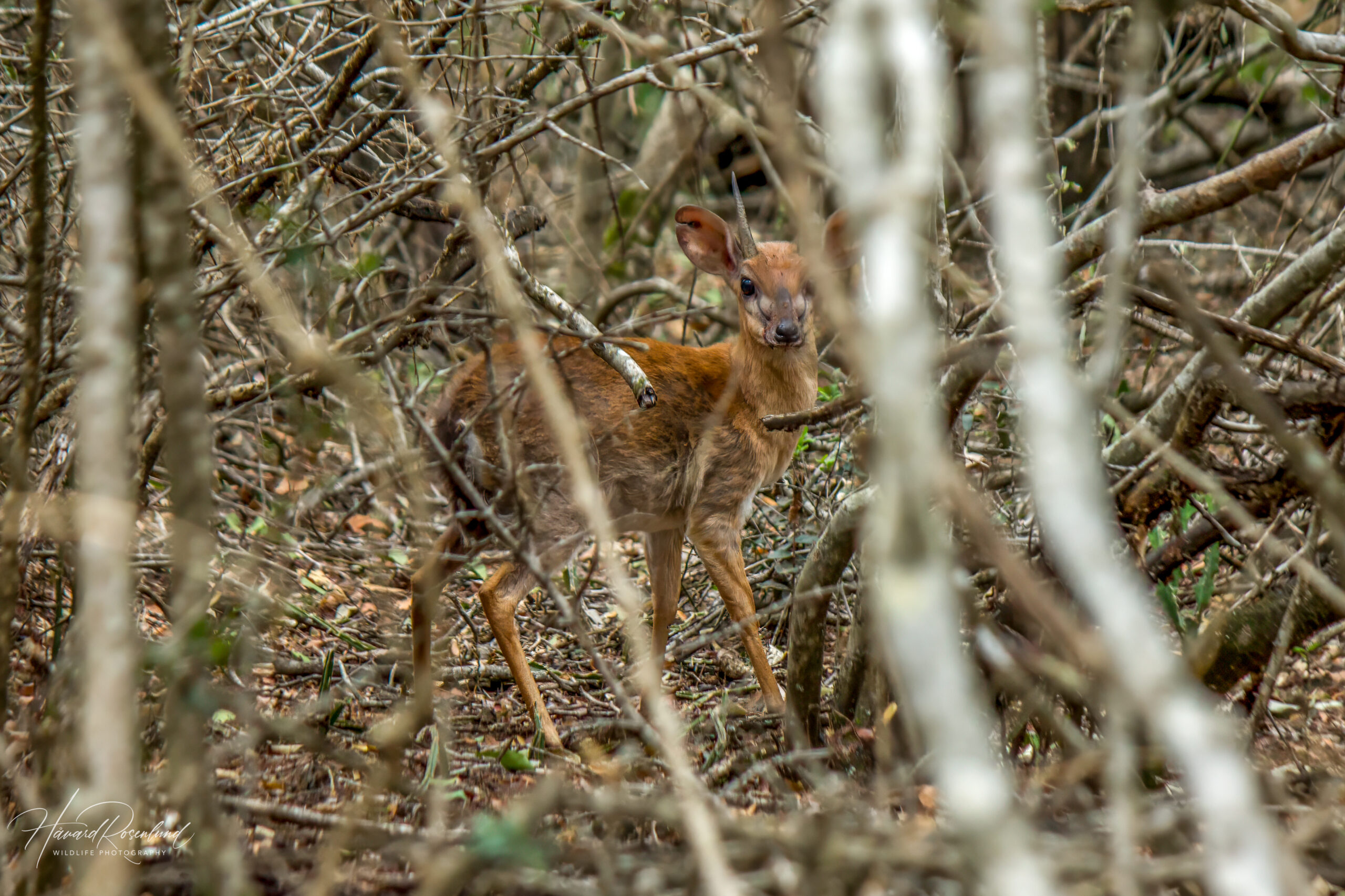Description
The common duiker, or grey duiker (Sylvicapra grimmia), is a widespread small species of African antelope. The name “duiker” is an Afrikaans word, which means “diver”, and comes from the way they dive away from danger into the bush when threatened. Though often called grey duiker, color varies greatly between populations, with reddish-yellow, light brown and grey being common variations. Only males have small straight horns, whereas the females are lager. Both sexes have a black line on their face from the nose and up. Common duiker can reach 50 cm (20 in) to the shoulder and weigh between 12-25 kg (26-55 lb).
Diet & habitat
Common duiker lives in various habitats but are not common in forests and deserts. It prefers areas that are open but with sufficient cover for hiding. It is rarely seen out in the open for long. You often find common duikers hiding in tall grass or among thickets. They are browsers and feed on leaves from small trees and bushes as well as seeds, fruits, pods, flowers, roots, bark, and fungi. Common duiker is also the only antelope known to feed on insects as well as nestling birds. They will often follow monkeys and eat leftovers that fall to the ground.
Social behavior & reproduction
Common duikers are solitary and territorial animals. They are most active at dawn and at dusk, and often into the night. Males and females share territories and will only chase away individuals of the same sex. The male and female usually only come together when mating. They will mark territories using scent glands in their hooves and the preorbital glands seen as slits on either side of the face. Gestation period might vary, but six months is common. The lamb will stay hidden most of the time while the mother forages in between sessions of suckling. Lambs are well-developed at birth and are able to run within a day. A common duiker is sexually mature at eight months old, and common lifespan is 8-11 years.
Predation
Common duiker is preyed on by multiple predatory species, but are commonly taken by leopards, eagles, pythons, and jackals. Though they will normally run away from danger, common duikers can defend themselves with their sharp hooves and males can use their horns. If caught they will give out a cry to attract other duikers, and if a lamb is caught it will call to attract its mother.
Status
Apart from the horn of Africa and the central African rain forest regions the common duiker is common throughout sub-Saharan Africa. With its ability to adapt to many habitats and diets it is often considered the most successful antelope species in Africa. It is believed to be 12 subspecies throughout its range. There are no immediate threats to this species, and it is thus considered least concern on the IUCN Red List.









